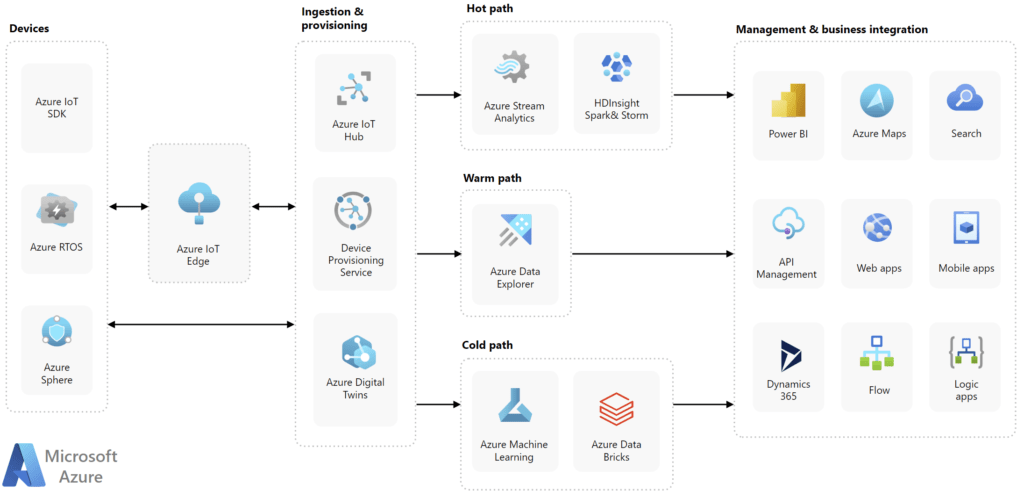Last year Google announced the discontinuation of its Google IoT Core Service.
Cloud IoT Core will be retired on August 16, 2023. After August 15, 2023, the documentation for IoT Core will no longer be available.
First, it's important to understand why Google is shutting down its IoT platform. According to the company, the decision was made in order to "focus their efforts on a limited number of products that will have the biggest impact." This means that they will no longer be supporting IoT devices and applications. For companies currently using Google IoT Core, it's important to start thinking about migrating to a different platform in order to ensure the continuity of their business operations.
One of those options is Azure IoT. Azure IoT allows businesses to easily connect, monitor, and control Internet of Things (IoT) devices. It provides a wide range of features and capabilities, like device management and provisioning, data processing, and analytics. That all includes the full benefits the Microsoft Cloud brings like security, scalability, and flexibility, making it a great choice for IoT solutions of all sizes.
Hello Azure IoT
Before you begin your migration from Google IoT to Azure IoT, it's important to make an inventory of all the devices and sensors currently connected to your Google IoT system. This will help you understand the scope of your migration and ensure that all devices are properly configured and connected to the new platform.
Once you have a clear picture of your current setup, you can start mapping components and start assembling Azure PaaS services in order to create your IoT Solution. Azure IoT Hub will play a crucial role in this new setup and will serve as the central point of communication between your devices and your Azure IoT platform.
Migration of the actual devices will vary depending on the type of device you are using, but typically it will involve updating the firmware or software on the devices, as well as making changes to the configuration settings. For example, you will need to update the connection strings and keys to match the Azure IoT Hub or the Device Provisioning Service.
Once your devices are properly configured and connected to Azure IoT Hub you can begin moving your data process paths into Azure. This may involve updating your existing code base or implementing new Azure-based services within your platform. The diagram below shows a list of Azure components that are commonly used to process the data in different paths.
Business Continuity
Next to the technical side of things, it's important to have a plan in place to manage the migration process and minimize the impact on your business operations. This may involve running tests to check the connectivity and functionality of your devices, as well as monitoring data and analytics to ensure that they are being captured and processed correctly. It's important to have a plan in place to manage the migration process and minimize the impact on your business operations. This may involve scheduling the migration during off-peak hours or providing a fallback option in case of unexpected issues.
The end of Google IoT Core marks the end of an era and the beginning of a new one. While it may be challenging to migrate to a new IoT platform, it's also an opportunity for businesses to take advantage of the advanced capabilities and features offered by Azure's IoT services and Microsoft Cloud.
Don't let the end of Google IoT Core slow down your IoT initiatives. If you're considering making the switch to Azure, we can help. Our team of experts can assess your current IoT setup and provide recommendations on the best path forward. We can also assist with the implementation of Azure's IoT services, ensuring a smooth transition into the Microsoft Cloud.
Read more about our IoT Solutions and let's get in touch.




